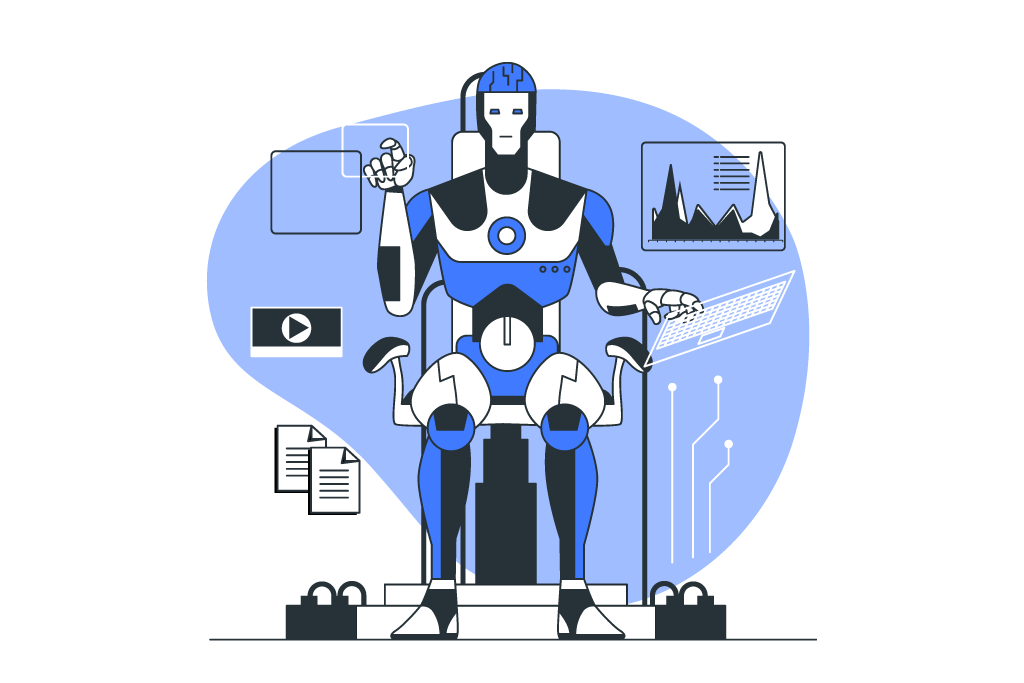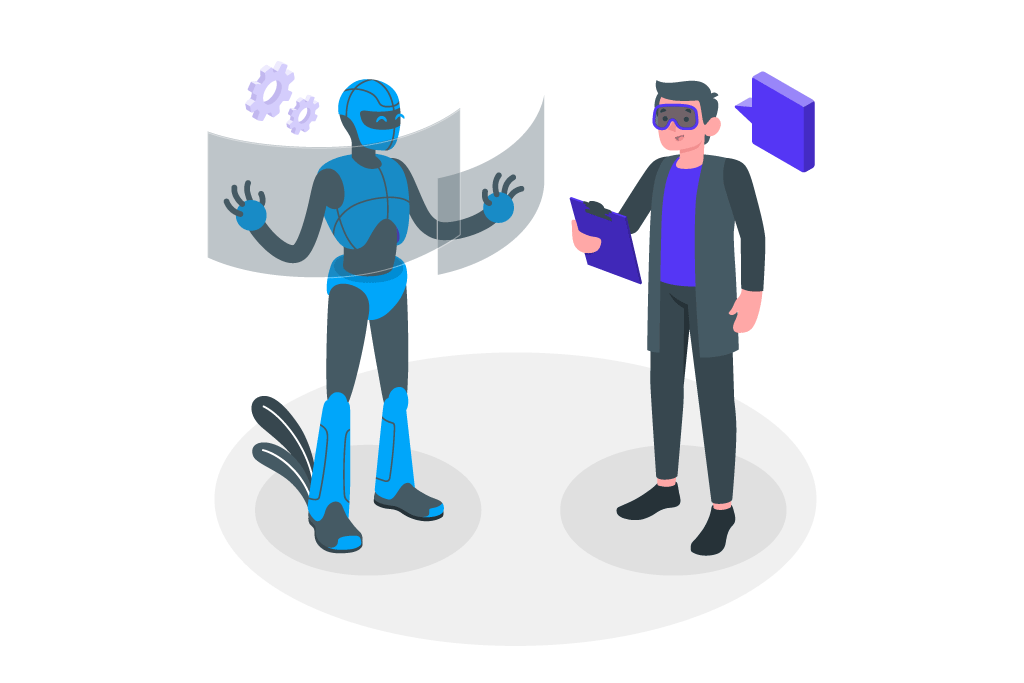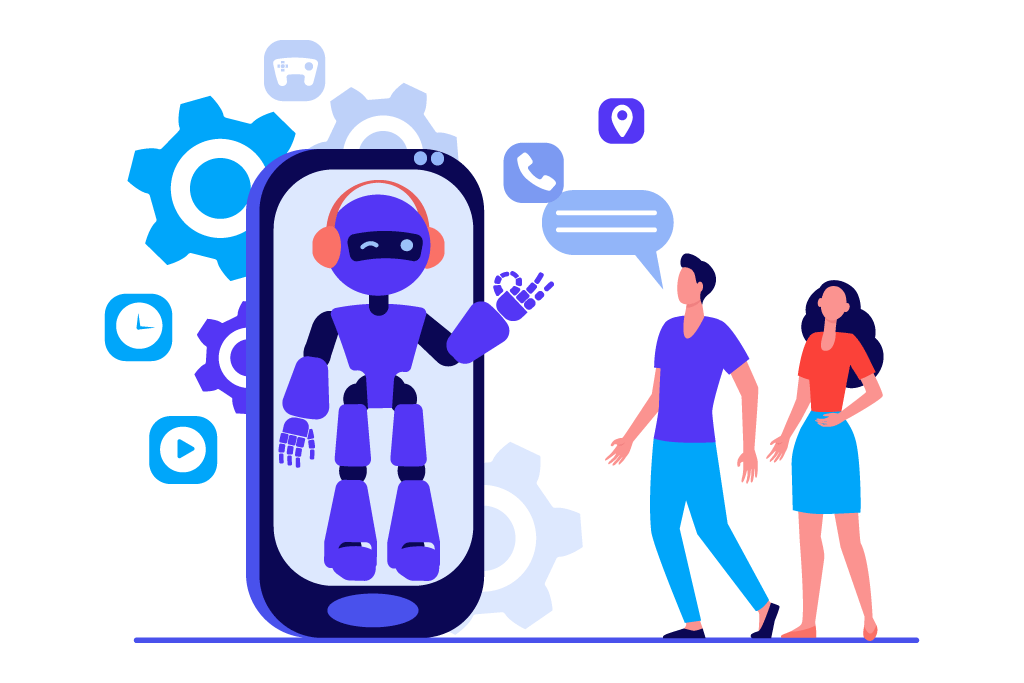Do you remember the last time when a valuable customer of yours tried to contact you via the customer helpline service, and it took you a good 16 hours long to realize and respond? And that was the end of your journey together- *UNFOLLOWED*. Well, when most customers understand your limitations, there are yet some users who are not ready to accept such delays. But, can your team stay glued to the screen and make immediate responses for 24 hours? That’s humanly impossible. So what can you do to enhance your customer services?
Well, AI has an answer for you- a digital program with text and voice-based applications that facilitates communication between you and your customers and provides real-time solutions to their queries. An excellent innovation that can stimulate conversation with the user leveraging natural language processing is the new norm in customer service. The best part- there is no need for human intervention.
Before anything else let us get a brief idea about the evolution of Chatbots. The roots originate in 1966 when the first Chatbot was developed by MIT Artificial Intelligence Professor Joseph Weizenbaum. Eliza. Pairing the words entered by users to a possible list of responses and producing significant output was the design structure of Eliza. Modern-day Chatbots are precisely programmed to function like Eliza. Subsequent Chatbots continued to develop in late 1900 that included Parry, Jabberwacky, Dr. Sbaitso, and A.L.I.C.E.
Early 2000 witnessed the launch of improved conversational tools that encouraged businesses to incorporate them and enhance customer communications. The Chinese application WeChat along with Apple’s Siri, Google’s Google Assistant, and Microsoft’s Cortana became mainstream biggies immediately after their release making conversations fun and enhanced. Inspired by the overwhelming success of these programs, it did not take much time for Facebook and other social platforms to incorporate this AI program in their message arena. Subsequently, brands came up with their customized Chatbots and installed them into their websites and social media pages.
Here are a few reasons that will convince you to leverage Chatbots in your business communications.
Patience is not everyone’s cup of tea
In the world of continuous movement, patience has lost its virtue, and users search for immediate, quick, and responsive services. For a positive customer experience, customer representatives are expected to be patient while solving customer problems. Chatbots can fill in the lacuna of inpatient service and resolve issues directly.
The messaging arena has surpassed social networks
Modern-day internauts find it easier and convenient to converse over messaging applications than responding to IVR questions to connect to a human representative. Also, there is a surprising rise in the number of users of messaging applications than social networks. This gives you an undeniable reason to embrace Chatbots.
Enhance customer experience
Customer service is the lifeline of your business and when a remarkable percentage of your customers are millennials, you cannot encourage passive interaction anymore. But again, do you have the manpower to respond to the continuous queries of your customers? Then why not employ an intelligent robot that is available 24/7 to entertain repetitive questions, provide automated real-time solutions and store customer information. Hence, a win-win situation for your customers and your customer service team who can now handle other important tasks. Eventually, this will have a positive impact on your customers and promote brand engagement.
Allows amendment of services based on feedback received
You can program your Chatbot to reach out to the customers visiting your website or social page with surveys to collect information on their preferences, needs, and grievances. Bots can be used to monitor the purchasing behavior of your customers, and based on the results you can make necessary improvements in your products and services and plan customer-specific targets.
Generate potential leads and boost sales
Chatbots are excellent tools to persuade consumers with a preset questionnaire prepared by the sales team to purchase your products and ensure whether the flow is in the right direction to get higher conversion rates. They ask relevant questions to the consumers and direct them to the sales team to make the immediate conversion and also recommend new products and services to your customers. By deploying Chatbots you can notify your customers about discounts and offer prizes to promote sales. Consumers who are otherwise reluctant to reach out to your company through emails and calls can connect through Chatbots.
# 64% of internet users say 24-hour service is the best feature of Chatbots and 37% of people use a customer service bot to get quick answers during emergencies (Drift)
# 64% of customer representatives can utilize their time in solving difficult and complex problems with the help of Chatbots (SalesForce)
# 40% of users of all ages prefer using Chatbots when shopping online (Tideo)
# Businesses can save up to 30% on consumer support costs with the help of Chatbots (IBM)
# The global Chatbot market is expected to be projected over $994 million by 2024 (ClickZ)
Wrapping up, Chatbots have gained significant traction in recent years and are recognized as the future of business communication. When it comes to creating Chatbots, it entirely depends on the needs of your company. However, a successful Chatbot will be made out of a combination of the different forms of AI such as Natural Language Processing, Semantic understanding, and machine learning.
The call for enhancing customer service is already knocking at your door. Build your Chatbot software today and enhance your communication with your audience.




